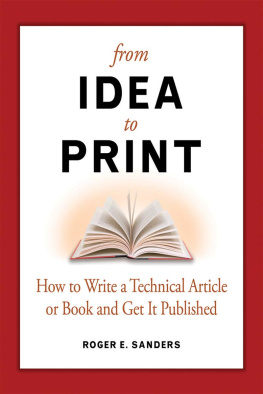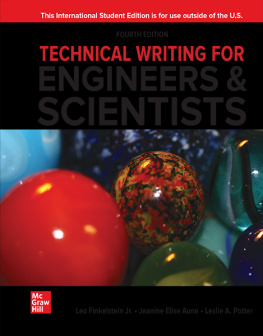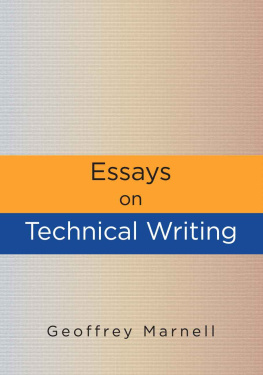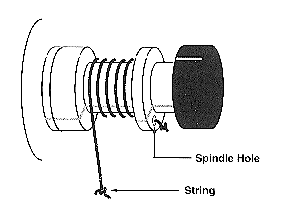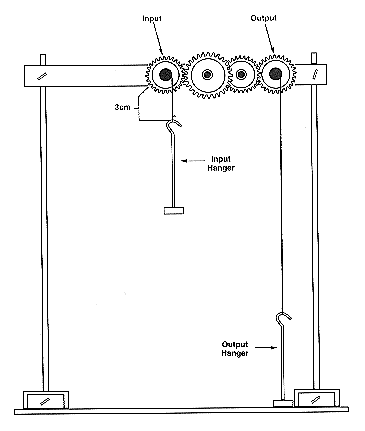| page_1 |
| Section 1
The Style of Technical Writing |
1.1
What Is Technical Writing? |
| Technical writing communicates specific and factual information to a defined audience for a defined purpose. The information is technical in nature, and this is what makes technical writing different from other types of writing. Broadly, that audience includes technical readers, managerial readers, or even, at times, general readers. The purpose is to inform, instruct, describe, explain, or otherwise document scientific or industrial processes and mechanisms. |
|
|
| page_1 |
If you like this book, buy it!
| page_10 |
| | A common misconception is that highly educated people prefer longer and more complicated writing. You would be mistaken ever to believe that because your readers have a highly technical background, they will prefer longer sentences. They do not. |
| Long sentences make your reader try to keep track of more information than is easily managed. It is not that the mind cannot do it but rather that your reader tires of constantly doing it. A single long sentence at intervals throughout the writing does not pose the reader a problem. It is when every sentence is long and difficult that the reader tires and begins to lose interest and drive. As sentences approach 2030 words, it becomes difficult to keep straight all the information in them. When a sentence goes beyond 30 words, it becomes all but impossible to read without going back and studying it for meaning. The following sentence is too long and needs revision: |
| | | It certainly appears that once the tests have been finalized on the new polymer for the motor housings, we can gain a firm and clear consensus on what actions concerning the replacement or the continuance of present housing materials should be, because the next run on housing is due on the 15th of next month. [55 words] |
| After being revised, it consists of two sentences of 21 words and 20 words: |
| | | After testing the new polymer for motor housings, we must make a final decision on whether to use it or not. We must decide on which polymer to use before the next production run, scheduled for the 15th of next month. |
| Action coupled with a direct statement is at the heart of effective technical writing. Strong, active verbs give your writing energy and power that add interest and understanding to the message. Weak, |
|
|
| page_10 |
If you like this book, buy it!
| page_100 |
| Experiment Objectives
Upon successful completion of this experiment, you should be able to figure the IMA for a gear train and a worm gear system for gear teeth numbers. | Purpose for instruction | Equipment Required
Support Stand Set (following parts)
| | Two Support Rods with Base |
Spur Gear with Bracket
Worm Gear
Two Small Weight Hangers
Small Slotted Weight Set
30 cm Ruler
Nylon Cord
Introduction
A gear is a wheel with teeth that is connected to an axle. When these teeth mesh with the teeth of a gear of different size, a mechanical advantage can be obtained. The gear to which the input force is applied in a pair of gears is called the input gear. The gear receiving the force from the input gear is the output gear.
| List conditions prior to instruction | Procedure
Refer to the detailed figures that follow when assembling your equipment.
1. Mount the support rods on the breadboard.
2. Mount the spur gear bracket near the top of the support rods.
3. Tie a 30 cm length of cord to each of the spindles. Pass the string through the hole in the spindle, and knot the end. Tie the other end of both strings to a weight hanger. See Figure 1. | Detailed sequence of instructions |
|
Exhibit 33
General Audience Technical Instructions (partial) |
|
|
| page_100 |
If you like this book, buy it!
| page_101 |
| Figure 1
Attaching strings to spindles |
| 4. Refer to Figure 2 for the proper gear designations. |
Figure 2
Gear designations |
| | 5. Tighten the output string by turning the output spindle. Place the output hanger on the breadboard directly below the output spindle. |
| | 6. Wind the input string around the input spindle. Do this until the weight hanger is suspended about 3 cm below the bracket. See Figure 3. |
|
|
| page_101 |
If you like this book, buy it!
| page_102 |
| Figure 3
Weight hanger placement |
| Each step must be written in the imperative mood. The subject "you" will usually be unstated. In other instances, you may find it |
| effective to actually use the pronoun "you" as the imperative subject. This is the only acceptable style for writing technical instructions. The old-fashioned impersonal and third-person passive style of writing is totally ineffective in technical instructions. |
| Exhibits 33 and 34 reflect the different audiences technical writers must be able to address: general and technical. |
| In Exhibit 33, the instructions are for a student in a technical trade school. Students are at the general audience level in readership. As is evident in these instructions, they encompass the entire set of steps for definition and description. |
| In Exhibit 34, the instructions are for a technician who installs HVAC equipment. The technician does not need a great deal of definition and background due to technical expertise and experience. |
|
|
| page_102 |
If you like this book, buy it!
Next page

